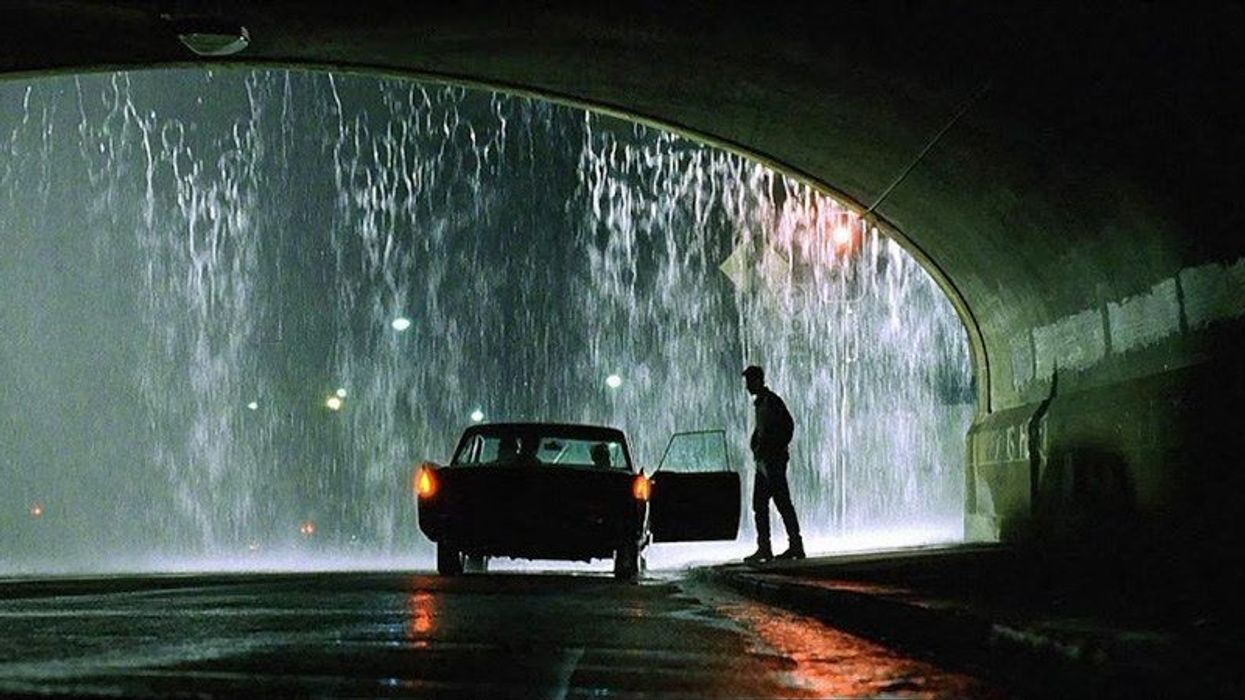No Lights? No Problem—Four Ways to Manipulate Natural Light
Who said you couldn't make a film cinematic without any film lights?

The goal of cinematography is to create a stunning image that takes everyone’s breath away. Everyone knows that lighting is a big contributor to making a shot look beautiful, but how do you achieve cinematic lighting when you’re filming a low-budget or no-budget film?
The idea of cinematic lighting refers to the qualities or characteristics of light used in films that are linked by common traits like contrast, quality, and shape. Many cinematographers control these three factors with and without using any film lights. Check out In Depth Cine’s breakdown of the four ways a cinematographer sculpts natural light to create cinematic lighting.
Negative Fill
The easiest way to light a scene is to reduce illumination with a negative fill. Rather than adding light on one side of the subject’s face to create depth and contrast, a negative fill creates contrast by reducing the light on one side of the subject’s face. Negative fill creates the perfect shadow to make it look as if there were a light source directly on the subject. DPs reduce the light by placing a black surface wherever they don’t want any light to be reflected such as a wall, floor, and ceiling.
Negative fill creates contrast and shape that is soft and natural and will create a larger fill on the subject if placed closer to them in the scene. Common tools to do this include a frame with a blackout, a 4x4 floppy, the black side of a poly board, or pieces of duvetyne, which is a matte black material.
A more cost-effective approach would be to use a black sheet or cloth, a black or darkly painted wall, or some black trash bags. Negative fill is a fantastic way to create rich contrast with items that you can find under your kitchen sink.

Bounce light
Unlike negative fill, bounce adds light to a subject. Natural light is bounced off a white or reflective surface to create a new light source. This light can fill in shadows or be positioned to act as the key light for a scene. The output of the bounced light will be lower than the direct source, so be mindful about the time of day you are shooting.
To find where the light should be bounced from, angle the bounce at the ground and slowly change the angle until the light is in the correct position. Bounce light can also be used to create stronger shadows by using a mirror or a silver poly board. Usually, a white surface is used for a softer bounced light such as a frame with a white ultra bounce or meslin textile, a white poly board, or foam core.
The white sheets from your bed can be rigged in such a way to bounce light perfectly.

Diffusion
Diffusing light is a common cinematic technique used to soften the light without bouncing it. This is a cost-effective way of achieving illumination that is softer and more cinematic than sunlight. Translucent modifiers are placed between the light source and the subject to soften the contrast and shadow falloff.
A 12x12 frame with a half silk material can be placed between the sun and subject to soften the intensity of the sunlight and even out shadows. Silks or a grip cloth, 416 gels, or even the diffuser part of a 5-in-1 reflector can be used to diffuse any natural light.
Bedsheets, paper, or a shower curtain can be used to achieve this same effect.

Shape
Shaping or controlling how the light hits an object is an important aspect of creating cinematic lighting without any fixtures. Placing lights or a grip tool like flags in between the source of light and the subject affects the texture and shape of how the light falls on the scene. Flags and black textiles mounted on various sizes of frames can be used to block out certain portions of light.
The most common shapes tools used by DPs include nets, camo textiles, a cookie, or a dingle (a tree branch attached to a stand). While these tools can shape the light, curtains and blinds are basic and easy ways to naturally shape the light. Any household object can also be shifted in front of any light source to shape the light.

While there are some benefits to working without any lights, there are a few negatives. Lights provide a constant source of light, so shooting without them means the exposure may change if the sun shifts positions or hides behind a cloud. Working without film lights is also not fully advisable. You can do it, but you’ll yield better results by combining natural light, film lights, and negative fill.
In the end, it is the cinematographer's choice whether they want to work with or without lights. Working without film lights can build a cinematographer’s appreciation for working with natural light, and allow you to find new and creative ways to manipulate the sun to create the best-looking light that adds depth to a scene. Knowing how to light a scene without any film lights will better inform your cinematography for future projects.
Do you have any tips to light a scene without any lights? Share your wisdom with us in the comments below!
Source: In Depth Cine

 'Sunfish (& Other Stories on Green Lake)'CREDIT: JWH Films
'Sunfish (& Other Stories on Green Lake)'CREDIT: JWH Films









